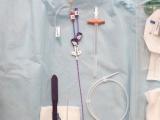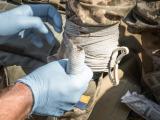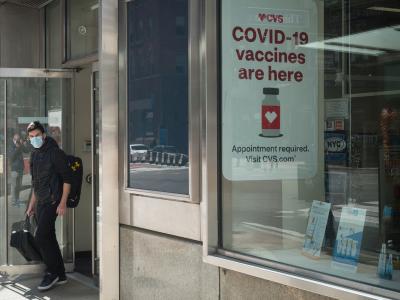With antibiotic resistance emerging as an urgent public health issue, much of the focus has been on the rise of drug-resistant bugs in humans and farm animals. But what about those animals that share our homes, our hearts, and sometimes even our beds?
That question has been raised in light of a recent study by researchers in China, who found that a pet shop worker, along with four dogs and two cats in the shop where he worked, were infected with a strain of Escherichia coli bacteria carrying the MCR-1 gene—a molecule that can confer resistance to the last-resort antibiotic colistin.
"These findings suggest that mcr-1–producing E. coli can colonize companion animals and be transferred between companion animals and humans. The findings also suggest that, in addition to food animals and humans, companion animals can serve as a reservoir of colistin-resistant E. coli," the authors of the study wrote.
The study was one of several in recent years to examine whether humans and pets can share drug-resistant bacteria. In 2014, researchers in the United Kingdom analyzing strains of methicillin-resistant Staphylococcus aureus (MRSA) in cats and dogs showed that humans and companion animals "readily exchange and share" isolates from the same strain, a finding that suggested pets and humans can pass MRSA "backwards and forwards," as one of the authors told the BBC.
In a 2009 study, investigators swabbed household surfaces at 35 randomly selected homes and found MRSA in more than half of them. In looking for factors that might make a home more likely to harbor the bacteria, they discovered that the presence of MRSA was eight times more likely in homes with cats.
So should pet owners be keeping a wary eye on their four-legged friends?
Not necessarily. But the problem appears to be increasing, experts said.
Risks of pet-human exchange called low
"Although the possibility of any disease is an important factor to think about, the risk is low, and often considered to be outweighed by the benefits of pet ownership," says Christine Hoang, DVM, assistant director of the Division of Animal and Public Health at the American Veterinary Medical Association (AVMA).
Hoang and other experts agree that the potential clearly exists for resistance elements to move back and forth between humans and pets. But they say the risk of an individual getting a MRSA infection from their dog, to use one example, is very limited. The reverse scenario is more likely, given that MRSA strains exist in the nostrils of roughly one in three people.
"If your dog has a MRSA infection, yes it might pose some risk to you, but you probably already infected it," says Scott Weese, DVM, a veterinarian and microbiologist who studies bacterial infections in humans and animals at the University of Guelph in Ontario. Still, Weese adds, there is a slight concern that dogs and cats could shed MRSA in homes that haven't been exposed to the pathogens.
Of greater concern to Weese are increasingly drug-resistant gram-negative bacteria like E coli and Salmonella, which can cause severe illness in humans. These pathogens could live in the guts of pets and be shed in feces, providing a possible avenue of transmission between pets and humans. "There's a bigger unknown factor with the gram-negatives, so I'm a little more concerned about them," he says.
The problem is that very little research has been done in this area. When an individual acquires drug-resistant E coli, for example, pets aren't generally looked at as the source of infection. "It's not on the radar," Weese says. Most funding agencies and governments, for good reason, are worried about food animals and food as sources of infection. "But they're forgetting the animals that we have the most contact with."
The issue is worth discussing as an increasing number of Americans share their homes with pets. According to the American Society for the Prevention of Cruelty to Animals (ASPCA), somewhere between 37% and 47% of all US households own a pet. And for some pet owners, the relationship is a close one.
"With the intimacy we have with our pets, there is a chance that some of these resistance elements can move back and forth," says Jeff Bender, DVM, a professor in the College of Veterinary Medicine at the University of Minnesota.
Bender says good hygiene practices—not letting your pet lick your face, washing your hands regularly—are good precautions to take. In addition, says the AVMA's Hoang, pet owners can minimize their risk by taking their pets to the vet for regular check-ups and vaccinations.
"Healthy pets are much less likely to carry diseases that can infect you," she says.
Rising drug-resistant infections in pets
While the possibility of pets spreading drug-resistant bacteria to their owners may be limited, there is growing concern in the veterinary community about the rise of antibiotic resistance in companion animals, particularly drug-resistant skin infections, urinary tract infections, and surgical site infections. As in human medicine, this is limiting the treatments that can be used by vets, as more and more antibiotics become ineffective.
"I think it's increasingly more and more of a problem," says Bender, citing a recent informal survey of clinical veterinarians at the North Carolina State University veterinary teaching hospital, in which nearly 60% said they were "very concerned" about antimicrobial infections.
Some of these bugs—like MRSA—are coming from humans. Others, however, are the result of antibiotic overuse in veterinary practices creating selection pressure. And while antibiotic overprescribing in the human healthcare system has been well documented, Bender says "we have no idea" what the rate of antibiotic overuse is in companion animals.
But in a commentary for the Journal of the American Veterinary Medical Association (JAVMA), Bender and members of the AVMA's Task Force For Antimicrobial Stewardship in Companion Animals said it "seems likely" that the amount of inappropriate use in companion animal settings is close to the most recent estimates in human medicine—50%.
That's why Bender and his colleagues on the task force, including Hoang, are trying to provide guidance for implementing antimicrobial stewardship strategies and programs in companion animal practices. That includes developing lists of best practices for antibiotic prescribing. Bender adds that pet owners also need to be aware of the issue.
Another concern among experts is the fact that companion animals are not included in the National Antimicrobial Resistance Monitoring System (NARMS), which tracks antibiotic resistance among Salmonella, Campylobacter, and other bacteria transmitted commonly through food. Bender says most veterinary teaching hospitals have mechanisms to monitor changes in resistance over time, but both he and Hoang agree that there is a need for national surveillance of pets.
"Pets would probably be a good sentinel for monitoring exchange of resistance elements, as well as the bugs we might see," Bender says.
See also:
Aug 16 Emerg Infect Dis letter on MCR-1 involving pets
May 2014 mBio study on MRSA in humans and companion animals
August 2009 Am J Infect Control study on MRSA in households
February 2015 JAVMA commentary on antimicrobial stewardship in companion animal practice
October 2015 JAVMA survey on attitudes toward antimicrobial infections among companion animal practitioners
























